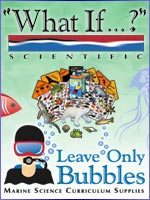

 |
 |
|
|||
|
|
Home Order Direct Density Flow Models Geology Simulations Water Masses Thermocline Upwelling/Downwelling Halocline/Internal Seiche Junior Model Additional Information  What If Scientific has merged with Leave Only Bubbles! Click here to visit the new store for all of your marine and Earth science curriculum needs! |
Bring the Earth Sciences to life AND satisfy National Science Standards with one of these versatile Density Flow Models. Developed by a National Board Certified teacher for teachers, these demonstration models are the most complete, most useful tools for simulating the realistic flow of fluids in nature (i.e. weather systems, ocean circulation and plate tectonics). You are viewing an archived version of the original What If Scientific site. What If Scientific has merged with Leave Only Bubbles Density Flow Models are now available in two sizes to complement Earth Science, Physical Science, General Science and integrated Science curricula in junior/senior high and college. Fascinating to observe, demonstrations can easily be expanded into an entire science unit. Accompanying manuals include setup instructions, student activity masters and answer keys.
In science, there are many concepts and phenomena that are hard to visualize and understand. The concept of density is often very difficult for many students to comprehend. The Density Flow Model, with its illuminated fluid movements, makes learning the density concept less abstract. The accompanying study guides encourage students to become actively engaged through the use of thought-provoking activities that employ scientific thinking strategies. Each activity is followed by challenging application questions that are related to real-world situations, making the experience both practical and meaningful. "What a neat unit! It's easy to set up, easy to run and make work the first time. It does a number of nifty hands-on demonstrations and experiments, illustrating a variety of natural phenomena. The instructions are straight-forward, and the observations/experiments are well thought-out. I highly recommend it." - Dr. William S. Cordua (Geology Dept. - University of Wisconsin at River Falls)
- Lee Carlson (Dept. of Physics and Astronomy University of Missouri at Columbia) |
|
©2000-2009 What If Scientific - Leave Only Bubbles. All Rights Reserved. |
|